Goats can be wondrous animals. Full of vivacity and charm, these compact farmyard animals have become popular both as pets and as livestock. Domesticated around 10,000 years ago, goats have long provided milk, fur, leather, and meat. Now, in many parts of the world, they’ve become common additions to hobby farms, backyard farm-steads, and ranches. But, raising goats for beginners is no walk in the park—especially if you’ve never dealt with livestock before.
Goats take a lot of love, but if you’re game, they can be incredibly rewarding additions to your farm-stead. Here, we’ll take a look at six of the biggest things you need to know to raise goats.
Let’s get started!
Goats: An Introduction
Goats are members of the Bovidae family of animals, which also includes cattle, bison, and antelope. They’re closely related to their wild cousin, the ibex. Incredibly, there are hundreds of millions of goats in the world, most of them bred to provide meat and milk.
1. There are Different Kinds of Goats
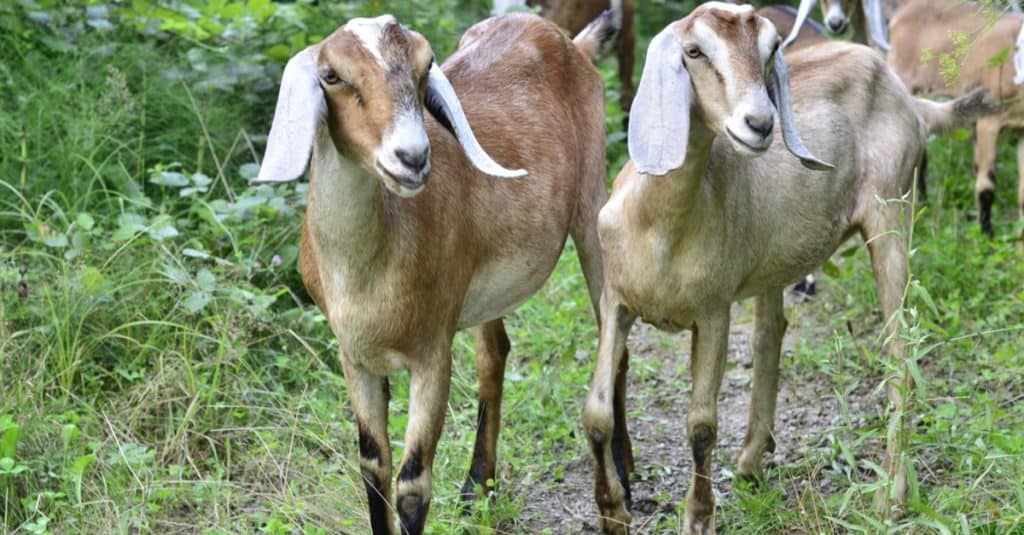
Zhanna Shamrai/Shutterstock.com
Raising goats often starts with the selection of a breed. With over 300 breeds to choose from, this can seem like an overwhelming task. However, only a few of those breeds are common to whatever area of the world you’re in. For example, a few of the most popular goat breeds in the United States include the Spanish meat goat, pygmy goat, Boer goat, Kiko goat, and Tennessee fainting goat.
There are also older, rarer breeds of goat known as heritage goats. These goats are generally harder to come buy, and more costly. But, if you’re planning on breeding show quality goats, a heritage breed like a Saanen, Toggenburg, Nubian, or French Alpine, might just be the right choice.
2. They Need, Food, Water, and More
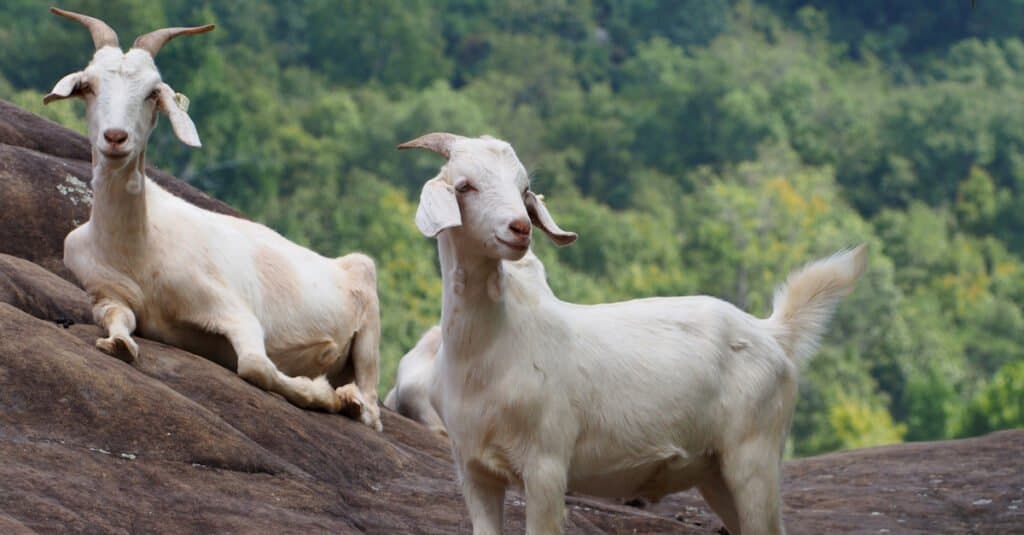
Lorri Carter/Shutterstock.com
So, you’ve chosen what kind of goats you want to get, now what? The next step you need to consider is the needs of your herd. Goats need plenty of space—the more goats you have, the more room they’ll need. A combination of open pasture or lightly wooded areas and shelter from the weather is best. Most goats don’t do well in the rain, snow, or intense heat, so it’s important to ensure they have a safe, warm place to shelter.
In addition to shelter, goats need food. A proper goat diet should consist of about 90% hay. In addition to hay, domestic goats need vitamins and minerals. They can get these from salt licks, grains, specially formulated goat pellets, and the occasional fruit and vegetable. Finally, raising goats also requires that you keep a constant source of clean water available.
3. Female Goats Need to be Milked
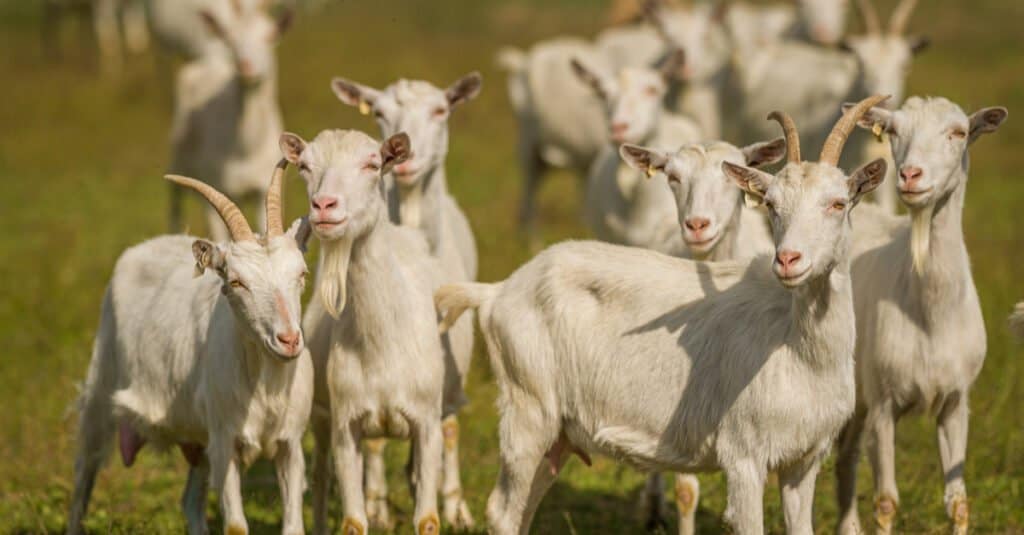
goodbishop/Shutterstock.com
Once you have your goats, and you’ve gotten food, water, and shelter, the next consideration is care. This is especially important if you’re planning on purchasing nanny (mothers with kids) goats for their milk. Dairy goats have to be milked daily, much like cows. You’ll also have to think about what you want to do with the kid goats; you can enlarge your herd, sell them, or slaughter them for meat.
4. They Have to Be Fenced In

Bailey Davenport/Shutterstock.com
It might seem like common sense, but keeping goats contained is one of the most important aspects of raising goats. The relative robustness of your fencing will need to match the size and strength of your goats. For example, large Boer goats (which can weigh over 300 pounds) require much more substantial fencing than something like a pygmy goat. Additionally, goats are fans of climbing on top of things, so you’ll also have to ensure that they can’t hop over your fence.
5. Goats Can Get Sick
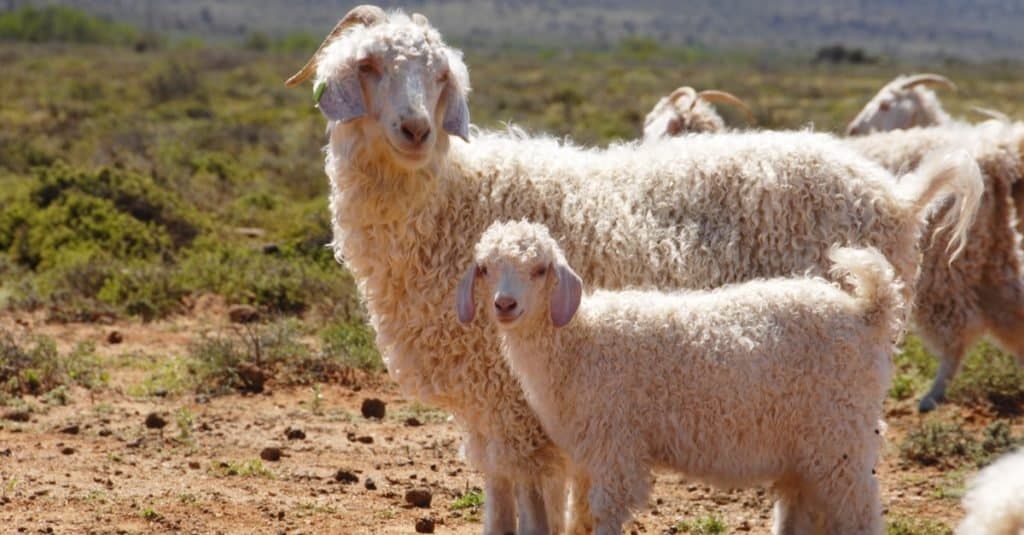
Janice Adlam/Shutterstock.com
Although generally resilient to disease, goats can still get sick. So, if you’re thinking about bringing home a herd, consider the medical care you will need to provide. First, you’ll have to vaccinate your goats, and have them regularly checked out by a livestock veterinarian. If you opt for a furry breed of goat, like an Angora, you’ll also have to decide whether you’ll maintain their fur, or pay a groomer to do it.
Finally, any goat you bring home will require regular hoof care. Goats’ hooves need to be trimmed every 4 to 8 weeks. It may seem daunting at first, but most goat owners opt to do this themselves.
6. They Can Be A Lot of Fun
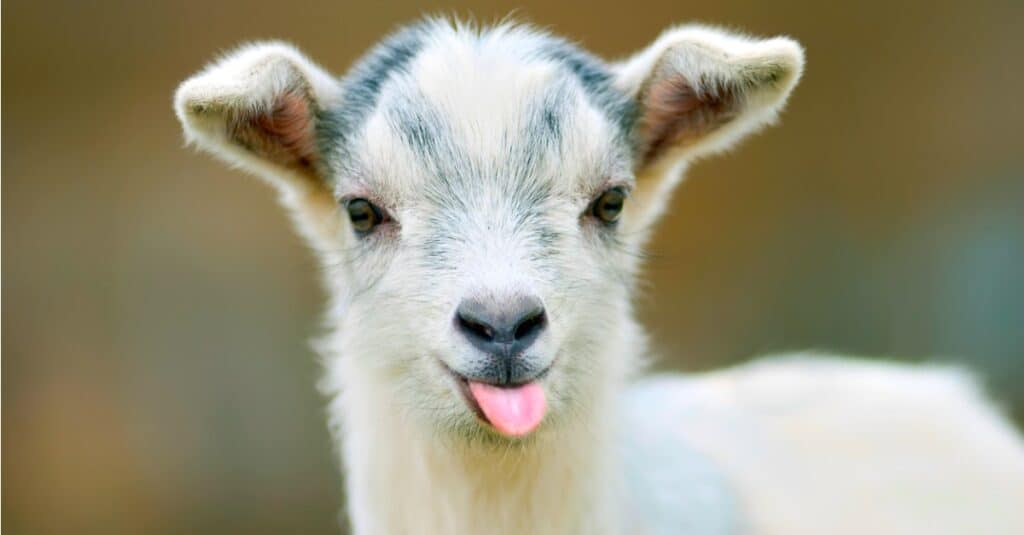
iStock.com/maximili
Finally, if you’re thinking about raising goats, remember that they can be a ton of fun. Goats are intelligent, inquisitive, and downright goofy at times. They can make an excellent addition to any hobby farm or farm-stead—as long as you’re willing to put in the work necessary to care for them.
Up Next
The post Raising Goats for Beginners: 6 Things You Need to Know to Raise Goats appeared first on AZ Animals.
from Animal News, Facts, Rankings, and More! - AZ Animals https://ift.tt/vKmcMij